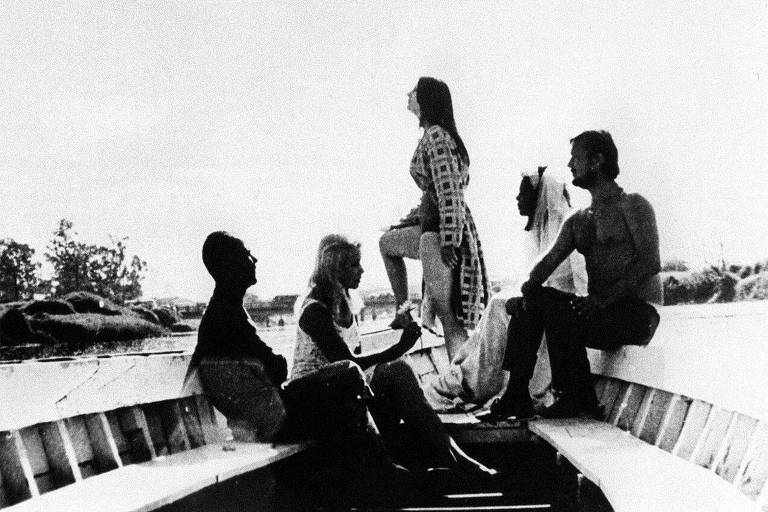![]()
A Margem (still)
Cinema and the Politics of Infrastructure in Ozualdo Candeias’s A Margem (1967)
American Comparative Literature Association Annual Meeting
April 8-11, 2021
Virtual
Conference Presentation by Ian Erickson-Kery (Duke)
A dominant strain in Brazilian criticism reads the cultural production of the post-1968 period as offering an exhausted or caricatural pastiche of the political tropes of the 1960s. For Roberto Schwarz, a core element of this pastiche was the sardonic, and ultimately depoliticized, treatment of rural Brazil by urban cultural producers, in stark contrast with the realist, heroic, or allegorical treatments of the national-popular subject during the previous decade. In other words, if the cultural production of the 60s was invested in the redemption of the urban poor and rural peasantry alike, the 70s are treated largely in terms of the hedonistic acquiescence to the dictatorship era. My analysis suggests that a more complex picture of the cultural politics of 70s Brazil becomes accessible when works of art are addressed beyond the realm of subject-formation and representation and instead in terms of objects, understood capaciously as the world of commodities and their circulation via infrastructures. Indeed, Brazilian cultural production was, in the 70s, made to grapple with the country's accelerated subjection to global supply chains and financial markets as much as the suppression of labor and popular resistance. In this paper, I focus on film as an especially useful medium for apprehending the politics of infrastructure, both via its capacity to give form to infrastructures otherwise obscured from view, as well as its ability to comment reflexively on the infrastructures of its own production and circulation. More specifically, I address the formal construction, production techniques, and circulation of Ozualdo Candeias' 1968 experimental film A Margem (The Margin), often treated as a transitional work between 60s Cinema Novo and 70s Cinema Marginal. Set entirely on the fallow banks of São Paulo's Tietê River, and following a cast of vagrant subjects shut out from the properly urban domains of the city, the film conjures a world located at the crease of urban and rural Brazil, an obscured space of commodity circulation and infrastructure vital to understanding the country's political predicament in the contemporary period.

